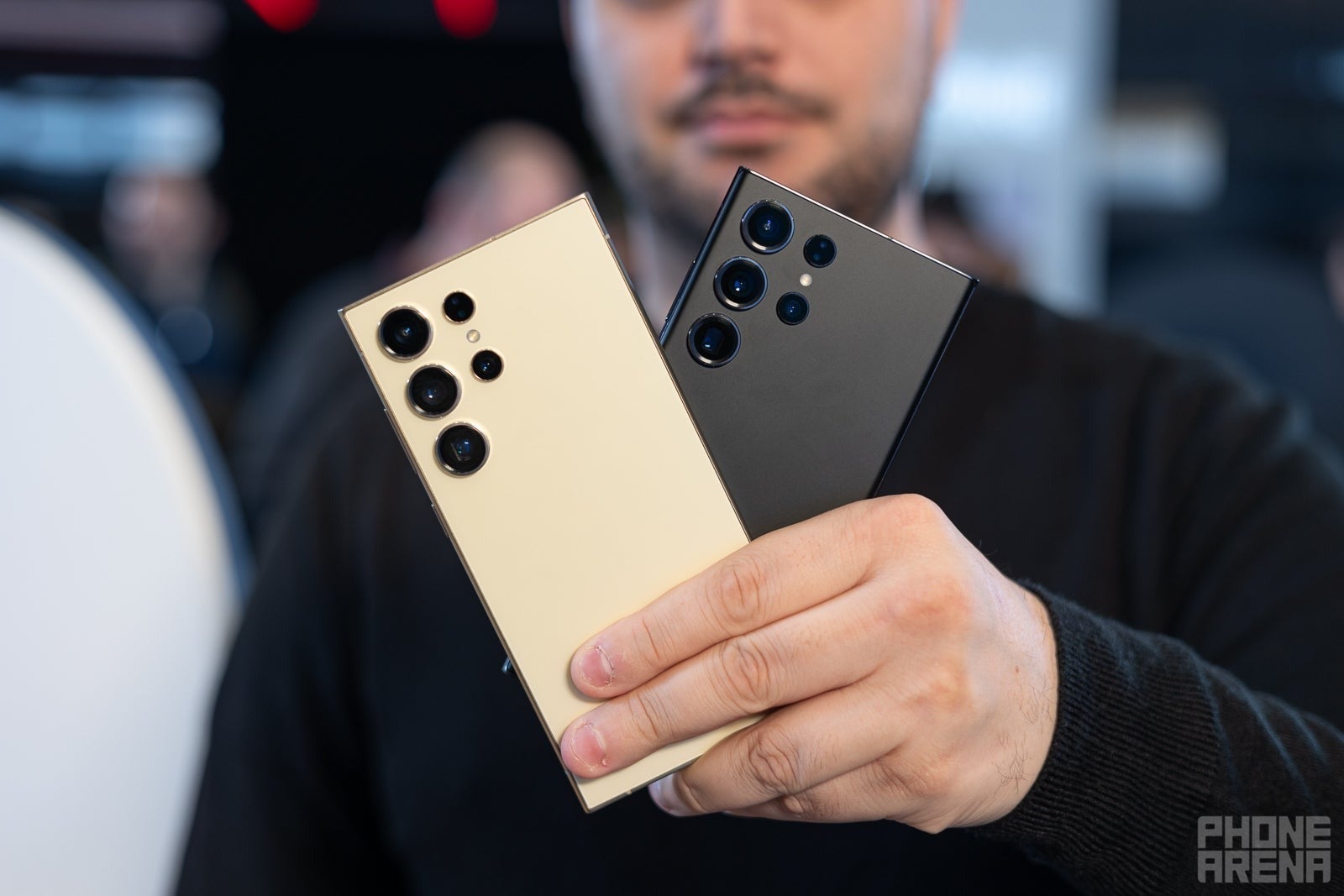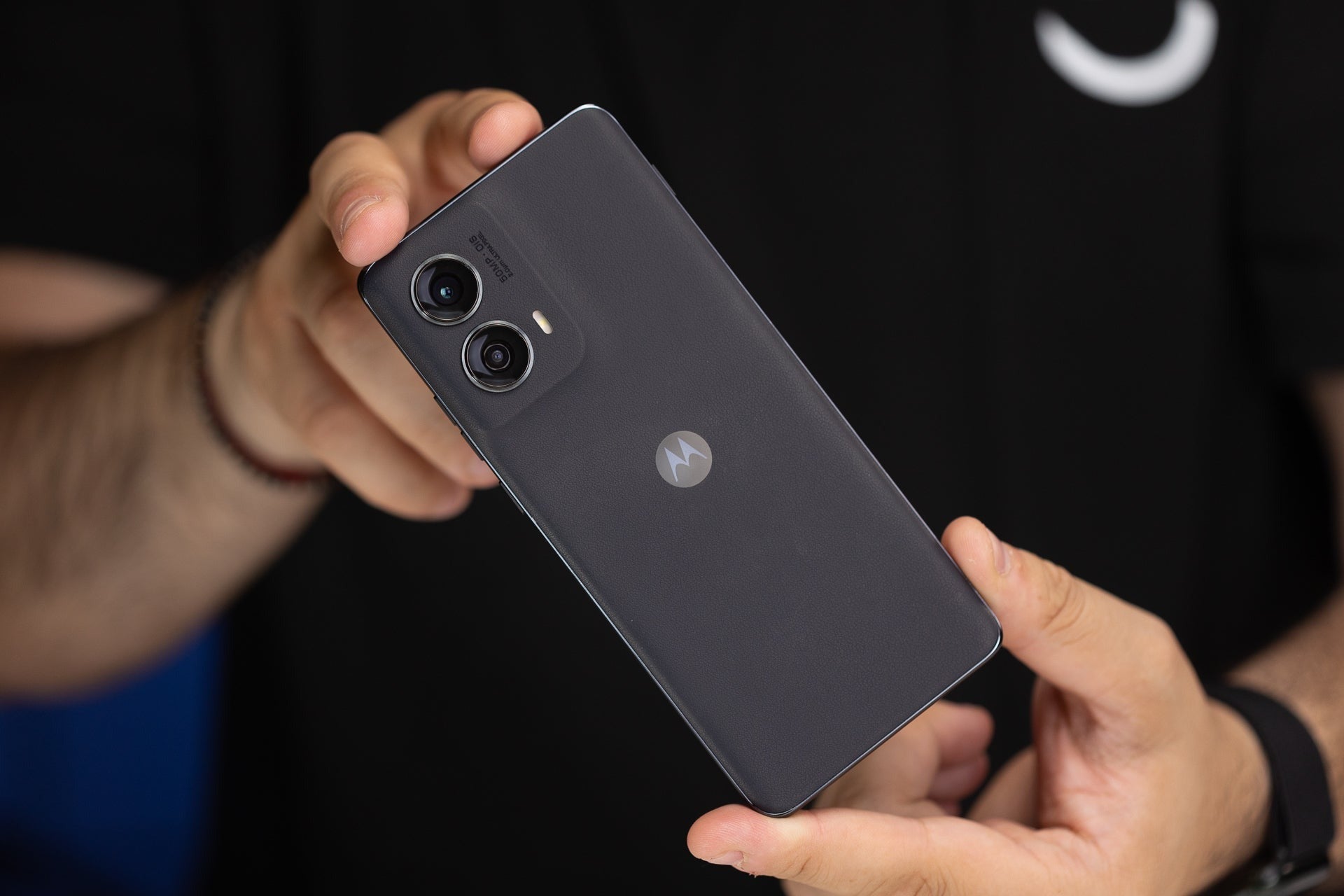Smartphone manufacturers don’t just prioritize aesthetics; they carefully balance functionality and durability. The materials, shape, weight distribution, and even the thickness of your device are all dictated by physics. Manufacturers have to juggle all of these elements perfectly to ensure the phone is not only comfortable to use, but also resilient against wear and tear, as well as efficient in its performance. But we all know there’s no perfect phone, so there are always some trade-offs, which we’ll talk about in detail.
Shape and form: square vs. rounded designs

The Galaxy S23 Ultra was round all over, with very curved display and sides. It was comfortable, but there’s a good reason Samsung stepped away from that approach with the next generation. | Image by PhoneArena
The shape of a smartphone is one of the first things users notice. We might not want to read a book by its cover, but many often make their purchase decision largely based on how a product looks. And while looks affect how stylish a phone is, they also come with their own quirky shape that has unique physical characteristics, impacting durability and ergonomics.
These days, we’ve gone from oval and curved phones to rectangular, sharp-edged ones. Of course, there’s proper reasoning behind both approaches.
Phones with flatter sides, like the iPhone 14 series, offer better durability. Stress distributes more evenly across square frames, reducing the likelihood of structural deformation. Additionally, flat sides create more internal space for components like batteries and larger sensors.
However, these designs can feel less comfortable during extended use due to sharper edges. For example, I found the iPhone 14’s flat edges stylish but not particularly pleasant during long gaming sessions as it would create dents into my palms, which could sometimes even hurt. Frankly, that probably means I should reduce my time on the phone, but then again that’s one of the reasons cases exist.
But it seems that in the past couple of years, manufacturers have found the right shape that balances comfort and durability. By giving their phones flat sides with tapered edges the device can have good structural integrity while also being comfortable to hold. Apple made the transition to such an approach with the iPhone 15 series, which initially looked exactly the same as its predecessor, but after I held it I was instantly convinced how much better it felt in the hand. I had a similar experience when I held the OnePlus 13, which dropped the rounded corners of the OnePlus 12.
Shape will always change, especially with the introduction of new technology, but for now I really feel like phones have reached an optimal form that strikes the perfect balance. It is no coincidence that most modern phones look the same, with every major phone manufacturer favouring a similar design in terms of form.
Material choices: glass, metal, and plastic


Motorola’s vegan leather is one of my favorite back panel materials in terms of feel, looks, and durability, but it has its downsides. | Image by PhoneArena
Glass, for example, has long been associated with premium phones, as seen in the iPhone and Galaxy series. Gorilla Glass or similar technologies offer scratch resistance and a premium feel. However, glass is inherently fragile, and even tempered variants can shatter under high impact. One thing I personally find annoying is that I have to be extra careful if I don’t want any scratches on my display or back, so as most people, I resort to protectors and cases.
Metal is also a predominantly used material in phones, even lower tier ones. Aluminum is the most common choice for frames, while nowadays titanium seems to have replaced stainless steel when it comes to the premium options. The more obvious use for metal in this case is the sturdiness it offers, but it is also the best material as far as heat dissipation. Unfortunately, since wireless charging is not possible with metal backs, we don’t see phones like this anymore.
Of course, there’s also plastic. While often associated with budget devices, polycarbonate offers excellent impact resistance and flexibility. It’s also lighter than glass and metal, making phones more comfortable to handle. For example, the Motorola Edge (2023) features a plastic back that balances durability with affordability, making it a great choice for those who want a lightweight, sturdy phone without compromising on style. In fact, I’d argue that Motorola produces one of the most stylish phones in recent years. But the biggest issue I have with this material is that it is much harder to recycle and reuse compared to glass and metal, and sustainability is a factor that’s more important for manufacturers than ever before.
Weight distribution and ergonomics


Many large phones have an issue with weight distribution, but the Vivo X200 Pro takes the cake in that regard. | Image by PhoneArena
Ever picked up a phone that felt heavier than it looked? That’s usually due to uneven weight distribution. Phones with well-balanced internal components feel lighter and more comfortable, even if their actual weight is significant.
Designers strategically place elements like batteries, processors, and camera modules to avoid a top-heavy or bottom-heavy feel. Tiny details like this can affect your experience with the phone without you even realizing it.
Final thoughts
I’ve personally experienced these changes—switching to an iPhone 6s years ago made me realize how much a thinner, well-balanced phone could transform daily use. Details like weight distribution, camera placement, and even the feel of the edges influence comfort in ways we often take for granted.
As technology evolves, innovations like flexible displays and personalized designs are on the horizon. But no matter how advanced smartphones become, their design will always reflect the principles of physics and the needs of users. By understanding these details, we can better appreciate the thoughtfulness behind the devices we use every day.

